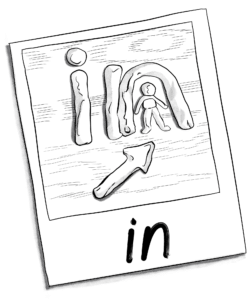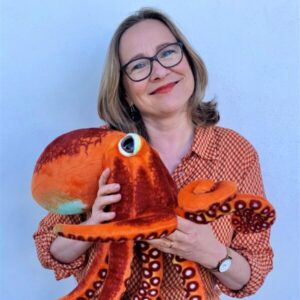
How Going Gluten-Free Transformed our Home
Hi, I’m Melissa, Beth asked me to explain how going gluten-free made a difference in our household. I have a

Sam is nearly thirteen, and despite having been in an intensive, structured literacy programme twice a week for over six years, he only had 10-15 sight words.
I was desperate and couldn’t think how to help him. I contacted many organisations, which all had great ideas and suggestions. Still, the one that perked my interest was a suggestion by the ladies at Dyslexia NZ, who said to look into Davis. This suggestion came after I mentioned an experience I’d had with Sam.
My Sam is a picture thinker. While lying beside him one day, I asked him to spell the word ‘was’. He did it easily. I got up and made the same word using letter tiles. When I asked him to read the word I’d made, he couldn’t.
When I started looking into the Davis method, I visited two facilitators with Sam. We went with the person he connected with the best, as a strong connection is essential for the programme’s success. The programme has also given Sam tools to manage his focus and attention.
The Davis Dyslexia Correction method created clay pictures for ‘trigger’ words. Nouns like cat, dog and house are easy for a child to picture, but other words, such as ‘the’ ‘and’ ‘it’, ‘is’ etc., can’t be visualised. These are the ‘trigger’ words. The Davis method encourages a child to make a picture out of clay for each of these words.
Sam took to it like a duck to water. I had no idea how to visualise ‘and,’ but he immediately came up with an idea. The child must decide what to make with the clay; they are the ones who need to remember the picture.
When Sam left the first Davis session, he grabbed my wrist and said,
For a child such as Sam, who has difficulty sitting still, his focus during the session was nothing short of miraculous. He sat from 8.30-4 pm, intently focused on creating clay words.

Since our initial six sessions with a facilitator, I now help Sam at home, and his teacher aid at school works with him on clay words three times a week. She is thrilled to have something to offer him and read a book about the Davis method to upskill for the sessions.
After six months of making ‘trigger’ words, Sam has 70-80 sight words. When I asked him to read the Essential Spelling Lists 1-3, he read all the words to me except ‘because’. This is the word he is currently working on in clay. Just the other day, Sam sent me his first text. He’d typed I’m doing my teeth now. I felt so proud. I want him to be able to communicate with his friends by text, and it was great to see him giving it a go. I’m hoping the improvements in his word recognition will help when he transitions to high school next year.
Hindsight is 20/20. I wish I’d stopped the structured literacy lessons sooner. They cost me $500 per term, and after the first term, Sam made no progress. Structured literacy helped my other children with their dyslexia, but Sam has a very different brain. Timing is vital with whatever programme you try. The Davis website says children must be over eight to benefit from their programme, but I think in Sam’s case, being twelve helped. He wanted to learn and was excited by this approach. Before Davis, it was like he was living in a foreign country. He saw words all around him, but they looked as strange as Chinese or Arabic.
Dyslexia has nothing to do with intelligence. Sam is bright and is gifted in EQ. His charm and people skills have enabled him to keep his self-esteem intact despite his literacy difficulties.
Although reading hasn’t been possible due to his low number of sight words, Sam is a voracious audiobook listener, and he amazes me with his recall of stories. History fascinates him. He loves nothing more than to tell the rest of the family about the latest historical fact he’s learned. Recently, he came third in his school speech competition, performing beautifully on stage with only three pictures on his cue cards. He loves drama and is starting an improvisation class next term.
Being outdoors improves Sam’s mood, and he competes in sports along with the rest of our family. A few years ago, he and my other two dyslexic children went gluten-free, which made a massive difference in their behaviour. You can read more about that here.
I hope you enjoyed hearing about Sam and his journey with the Davis Dyslexia Correction Programme. I appreciate in some circles, the programme is controversial, but it has definitely helped Sam.
Speechify is an app that can help dyslexic children as it reads online text. Here is my affiliate link.

Hi, I’m Beth. Seven years ago, when I discovered my son had dyslexia, I had a ‘light-bulb’ moment and understood this explained many of my own difficulties. Ever since, I’ve been on a mission to discover the best ways to wrestle what I like to call the dyslexia octopus.

Hi, I’m Melissa, Beth asked me to explain how going gluten-free made a difference in our household. I have a

It’s 4 AM and I’m going over what happened to Harry at school yesterday, wondering how best to help. My
2 Responses
I read this with interest as I am a reading tutor SL and had heard all the negativity, but I’d like to comment about similar negativity towards irlen lenses. Long story short, they made a difference for me. They softened the black and white contrast for me – not enough to invest in a pair.
Thanks so much for your comment, Rosalie. Interesting to hear Iren lenses made a difference to you. I am a great believer in seeing what helps each child. As I mentioned, Davis wasn’t a good fit for my son, but it is making a huge difference to Sam.